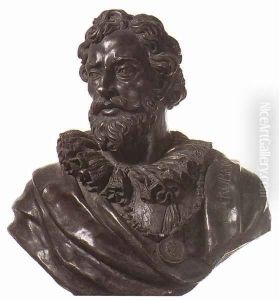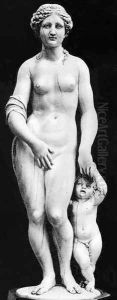Jorg Petel Paintings
Jorg Petel, also known as Georg Petel, was a significant figure in the realm of Baroque sculpture, born in 1607 in Weilheim, in what is now Germany. Despite the relative obscurity that surrounds parts of his life, Petel's work has left a notable mark on the development of European sculpture during the 17th century, particularly within the context of the Southern German and Flemish traditions. His artistic journey and contributions are characterized by a distinctive blend of Northern European and Italian influences, reflecting the broader cultural exchanges of the Baroque period.
Petel's early life was marked by extensive travel, which played a crucial role in shaping his artistic style and approach. After his initial training in Augsburg, he ventured to Rome and Genoa, where he was deeply influenced by the works of renowned artists such as Gian Lorenzo Bernini and François Duquesnoy. These experiences allowed Petel to absorb the dynamism and emotional intensity of Italian Baroque, which he later fused with the meticulous craftsmanship and detail-oriented approach of the Northern European tradition.
Returning to Augsburg in the 1620s, Petel embarked on a prolific career, producing a range of works from small, intricate ivories to large-scale wooden sculptures and altarpieces. His art is characterized by a remarkable attention to detail, combined with a dynamic sense of movement and an acute sensitivity to emotional expression. Among his most celebrated works are the ivory carvings, which stand out for their technical virtuosity and the ability to convey complex narratives and emotions within a compact form.
Despite his considerable output and the high regard in which he was held by contemporaries, Jorg Petel's work fell into relative obscurity after his death in 1681. However, renewed interest in the Baroque period and a greater appreciation of the technical skill involved in ivory carving have led to a reevaluation of Petel's contributions to art history. Today, he is recognized not only as a master of ivory sculpture but also as a key figure in the transition between the Renaissance and Baroque artistic periods, reflecting the vibrant cultural exchanges and the synthesis of styles that characterized the 17th century.

